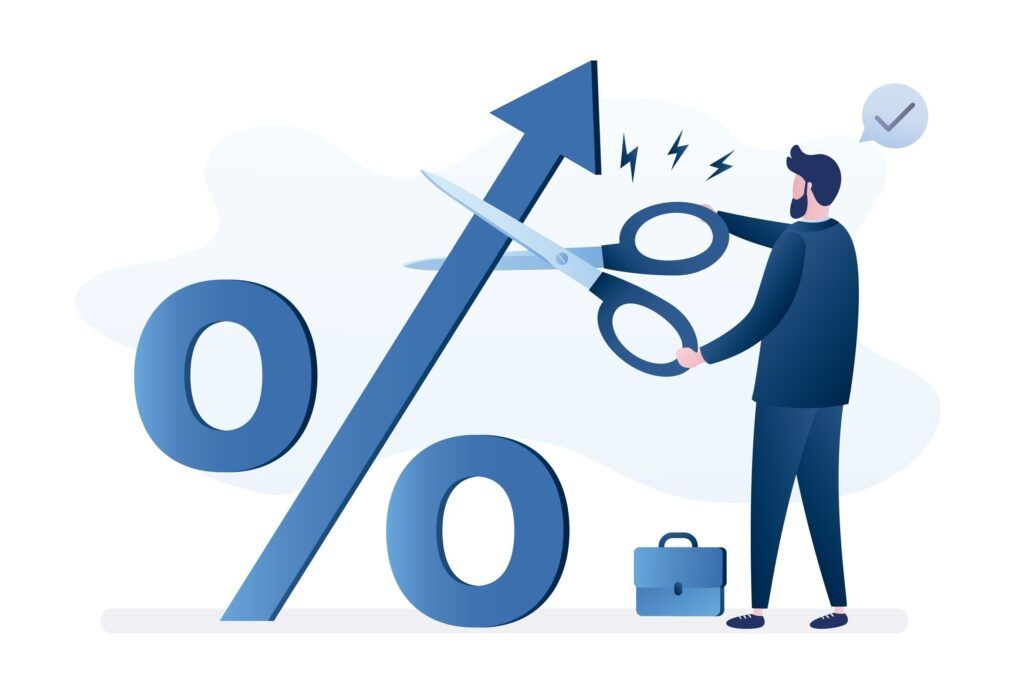Quick Links
Contact Us
Send a Message
Newsletter
We will get back to you as soon as possible.
Please try again later.
How to Protect Against Inflation

The monthly CPI (Consumer Price Index) data released for June 2024 showed that the rate of inflation had declined again to 2.97%. With inflation easing and the US economy showing some signs of weakness, the market is now turning its attention to a potential rate cut by the Fed.
Inflation, as measured by the CPI, peaked at a high of 9.1% in June of 2022 and remains above the Fed target rate of 2%. What does the inflation volatility over the last three years (when monthly US inflation averaged ~5.6%) tell us about how different asset classes have performed as a hedge against inflation? While many asset classes are touted as “inflation hedges” in the media, equities (stocks) represented a reliable protection against inflation through this recent bout with high inflation.
Treasury Inflation-Protected Securities (TIPS)
TIPS are issued with maturities of 5, 10 and 30 years and pay interest semiannually. The coupon rate is fixed. These US Government securities offer protection against inflation by adjusting the underlying principal, semiannually, in an amount equal to the change in the CPI. The dollar amount of the semiannual interest payments, therefore, change (increasing or decreasing with the CPI). Because TIPS, like other Treasury securities, are fully backed by the US government, they are considered safe investments.
Given these securities are specifically designed to adjust for inflation, it would be easy to conclude that TIPS performed well during inflationary environments in the past – like the last three years for example. However, the annualized return of the Bloomberg TIPs Index over the last three years is a loss of ~1%. How is this possible? The reason is that TIPs do not protect against interest rate risk. In a rising inflation rate environment interest rates also tend to rise causing all bond prices (including TIPS) to decrease, offsetting the benefit of principal adjustments, therefore delivering negative returns.
Corporate Bonds
How do other fixed income assets like corporate bonds fare in an inflationary environment? Because corporate bonds are exposed to both interest rate and inflation risk, they can perform even more poorly than TIPs in an inflationary environment. The annualized three-year return on the Bloomberg US Aggregate (an index of US investment grade corporate bonds) is a loss of ~3%. In addition to interest rate and inflation risks, corporate bonds carry credit risk (the risk that the issuer will default) and call / reinvestment risk (the risk that a higher yielding bond will be called by the issuer). Credit risk is especially important in an inflationary environment because “chasing higher yields” to stay ahead of inflation can mean lending to less creditworthy issuers and, therefore, putting the principal amount invested at risk. Corporate credit is company and industry specific as well, and a slowing economy can add to the downside, especially for weaker credits.
Gold
Gold is commonly cited as one of the best hedges against inflation. It is also viewed as a defensive, “safe haven” investment. The underlying spot price of gold is set by futures markets, but there are other options for investing in gold. The industry selling gold coins and bullion (physicals) to retail investors engages in widespread and aggressive marketing. Scams, misleading / dishonest marketing and hidden markups are rampant. There is a lack of liquidity (a wide “spread” between the bid and offer, that is, the price you buy and sell the physicals) and high commissions to acquire or sell gold, as well as storage costs. The bottom line for buying and storing gold bullion or coins: caveat emptor.
Another option for investing in gold are precious metal ETFs (e.g. GLD). These funds are backed by physical metals held in secure vaults. These ETFs cannot be redeemed for the physical commodity but are traded on an exchange and track the value of the underlying precious metals. Over the last three years, the annualized performance of the price of gold has been ~9%. This is strong performance and supports the view that gold can be a hedge against inflation, at least for short time periods. But gold needs other variables to help its performance such as domestic or global macro uncertainty and supply and demand at any given time.
Equities
Equity ownership in businesses can serve as a hedge against inflation for multiple reasons including: 1) companies passing along price increases to consumers for the value of their services and or products, 2) other drivers of margin improvement (including negotiating with suppliers or increasing internal efficiencies), and 3) new innovation which commands higher price points and better profit margins independent of inflationary pressure.
It is true that certain companies are better suited to handle inflationary pressures than others. Companies without brand or market power who compete on price can encounter challenges. Nonetheless, equity investments, especially in companies offering value to their customers and maintaining good profit margins, have reasons to perform well in an inflationary environment.
This view has been empirically borne out over the last three years. The performance of the S&P 500 over the last three years was an annualized ~8% despite a myriad of equity market headwinds (e.g. Fed rate hikes, geopolitical risks and recession fears).We’ve also observed the stellar performance of companies in our client portfolios which have benefited from a wave of new technological developments. The underlying drivers and the performance over the last three years support our view that equities are a good protection against inflation.
All figures in article are as of 6/30/2024.
If you have any questions about this topic, please reach us at (833) 888-0534 x2 or info@westbranchcapital.com
The views and information contained in this article and on this website are those of West Branch Capital LLC and are provided for general information. The information herein should not serve as the sole determining factor for making legal, tax, or investment decisions. All information is obtained from sources believed to be reliable, but West Branch Capital LLC does not guarantee its reliability. West Branch Capital LLC is not an attorney, accountant or actuary and does not provide legal, tax, accounting or actuarial advice.
About The Author
Ian Mahmud
Ian is a Principal at West Branch Capital, bringing 10 years of experience in the financial services industry to the firm. Ian started his career at Barclays in Investment Banking focused on Equity Capital Markets. He then joined the Research Department, as an equity analyst on a three-person Institutional Investor Top 5 ranked team in the country, covering the Medical Technology Sector. He covered the Healthcare Sector as a Coverage Investment Banker at Credit Suisse and most recently was a Mergers & Acquisitions Investment Banker at Centerview Partners in New York. After graduating from Milton Academy, Ian earned a B.A. in Economics (Magna Cum Laude, Phi Beta Kappa, Recipient of the College Key) from Bates College. At Bates, he was the President of the Debate Team, ranked 9th in the world. Ian holds an M.B.A. with a Finance Track Certification from MIT Sloan School of Management. He enjoys golf, tennis and skiing.
Important Links
Subscribe to our newsletter
Newsletter
Thanks for subscribing to our newsletter.
Please try again later.
Our Locations
Contact Us
Send A Message
Footer Form
We will get back to you as soon as possible.
Please try again later.
West Branch Capital was recognized by investor.com as a 5-star rated firm in 2024. View our profile. To learn more about the trust algorithm, visit https://advisorsearch.org/rias/trust-algorithm.
The Financial Times 300 Top Registered Investment Advisers is an independent listing produced annually by the Financial Times (June, 2017). The FT 300 is based on data gathered from RIA firms, regulatory disclosures, and the FT’s research. The listing reflected each practice’s performance in six primary areas: assets under management, asset growth, compliance record, years in existence, credentials and online accessibility. This award does not evaluate the quality of services provided to clients and is not indicative of the practice’s future performance. Neither the RIA firms nor their employees pay a fee to The Financial Times in exchange for inclusion in the FT 300.
All Rights Reserved | West Branch Capital





